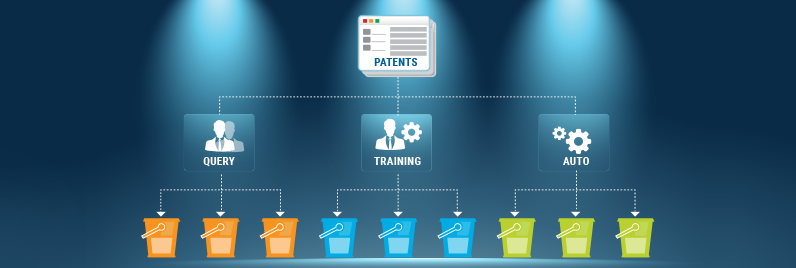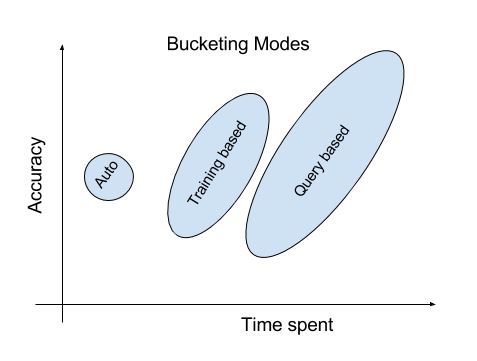
Bucketing is an ubiquitous and essential, though often time-consuming, workflow in patent analysis. If done manually, the quality of the bucketing exercise depends a great deal on the subject matter expertise of the individual doing the bucketing, and the time and effort expended.
Patent landscaping almost always involves bucketing a fairly large set of patents in a broad technology area, into smaller sets – to give a more granular picture of the sub-technologies contained within. A similar exercise is required for competitive analysis – where the aim is to compare a granular picture of two competing companies against each other to discern their relative strengths. In the context of patent commercialization, partitioning a portfolio is necessary to create viable lots for either licensing or sale.
Relecura’s new Bucketing module provides three modes to bucket a patent portfolio – ranging from Manual or Query-based, Bucketing using Training Sets, and finally a fully Auto mode.
A bit more about each of the bucketing modes.
Query-based (manual) – The bucket characteristics are specified by Relecura queries. The refine options are available to fine-tune these queries. These queries are saved as rules, to be applied to the portfolio being bucketed. Manual bucketing has been available in Relecura for the past year. It has however been revamped to create and manage buckets better, and integrate it with the two new modes we have now added.
Training-based (semi-automated) – In this bucketing mode, the user creates training sets of exemplary patents. These training sets are saved as rules. Our algorithm then processes these training rules to create buckets of patents similar to those contained in each of the training sets. An acceptable overlap between the buckets may also be set by the user.
Auto (automatic) – The only input required in this bucketing mode is for the user to specify the number of buckets desired and the acceptable overlap. The auto-bucketing algorithm uses these inputs to create the buckets. There are not rules to be specified in this method, since this mode is purely algorithm dependent.
The reuse of bucketing strategies.
The above modes can be mixed and matched as appropriate to the bucketing exercise. The various strategies can be reused in future bucket exercises. The bucketing rules may be organized and grouped using labels, and the rules tagged with a label holding a list of buckets could be thought of as representing a taxonomy of a technology or subject. Bucketing rules can be modified, and the portfolio bucketing re-run. Buckets may be created using labels instead of rules, in which case all of the bucketing rules tagged with that label get applied simultaneously to create multiple buckets from within the portfolio. At each stage, Bucketing statistics may be displayed to monitor the exercise and modify the bucketing strategy if required.
The visual given below illustrates the different bucketing modes in terms of accuracy and time spent. We will be releasing a case-study based on using the Bucketing Module which will walk through a specific analysis and give specific use-cases and examples of how each of the bucketing modes modes may be best applied.
For more information about the Bucketing module in Relecura, and to sign up for a trial and demo, click here.










